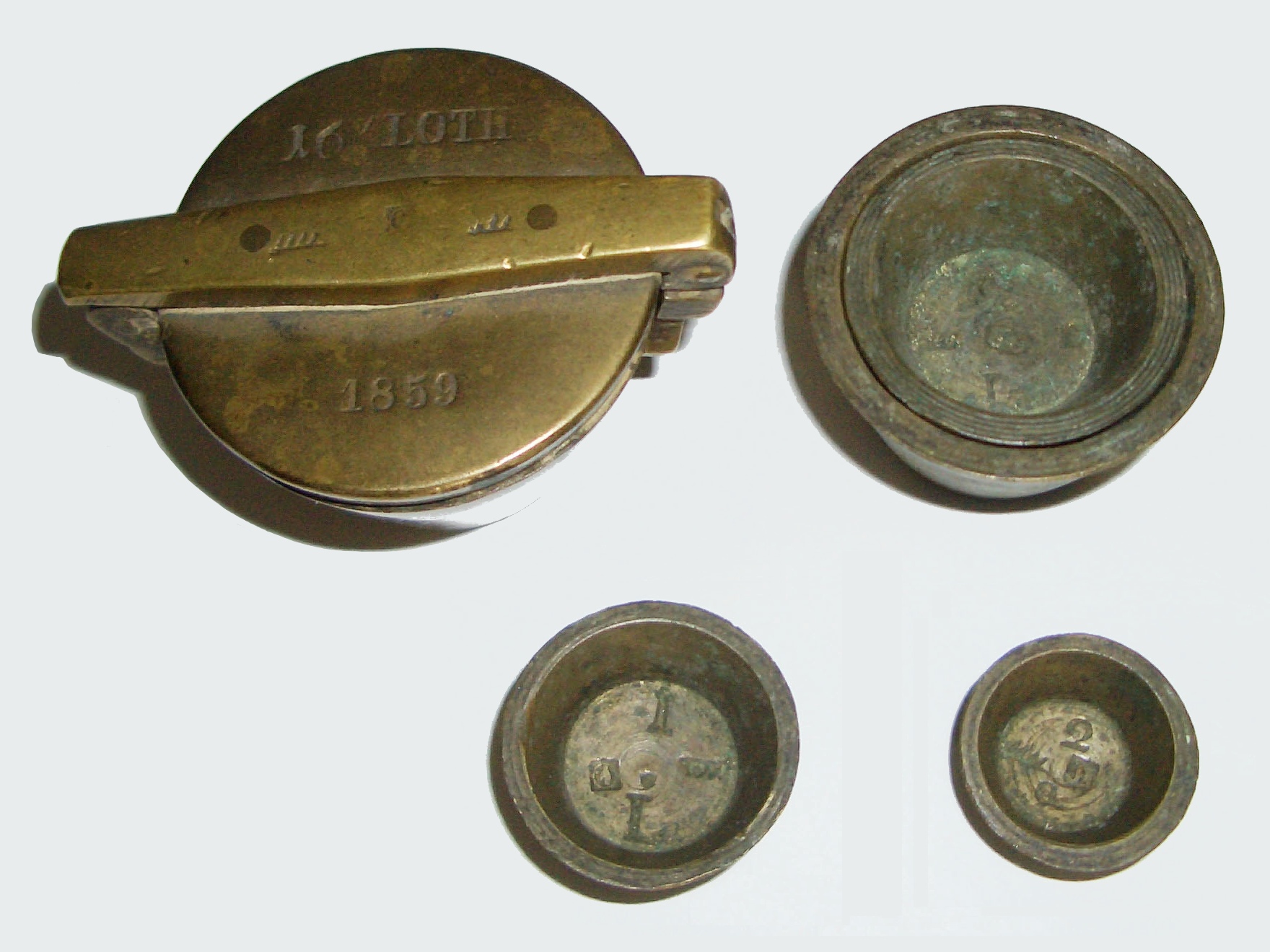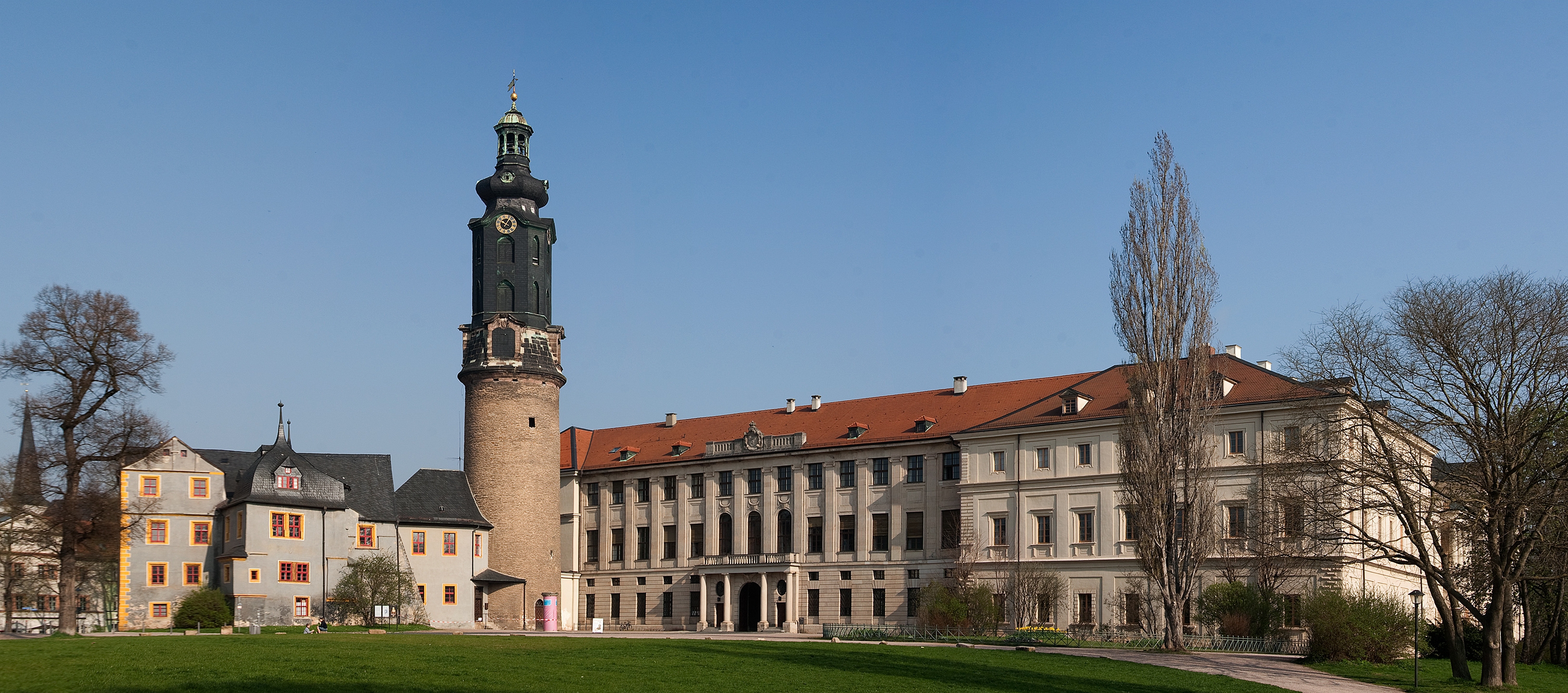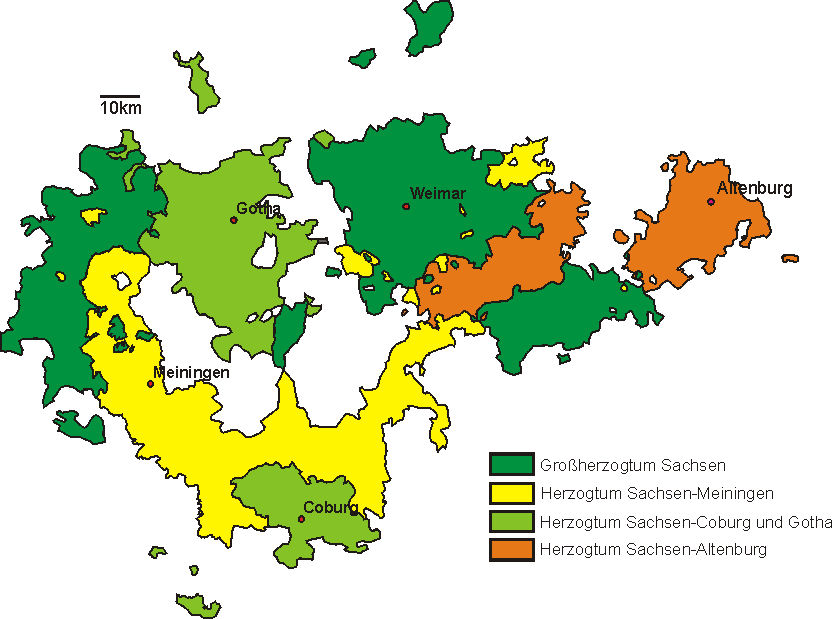|
Lot (mass)
The Lot (formerly also written ''Loth'') was a unit of measurement of mass, which was mainly used in German-speaking states of the Holy Roman Empire and in Scandinavia. It was replaced in the German Reich in 1868/69/72, in Austria in 1871/76 and in Switzerland in 1875/77 by the metric unit of measurement, the gramme. But in the early 20th century it was still used as a popular unit of measure in cooking and baking recipes. An imprecise but clear rule of thumb is that a ''lot'' corresponds to a "spoonful". Old ''Lot'' In Germany, Austria and Switzerland, the following weight system was traditionally used: (trading) ''Pfund'' = 1 ''Lot'' = 4 ''Quents'' = 16 ''Pfennig'' weights = 32 ''Heller'' weights The ''Lot'' had different weights in the various German states depending on the definition of the ''Pfund'' ("pound"); its definition also varied over time. However it was mostly set at between 14 g and 18 g. Some examples: * 14.606 g before May 1856 in Prussia, An ... [...More Info...] [...Related Items...] OR: [Wikipedia] [Google] [Baidu] |
Loth In Wuerttemberg 1859
Loth may refer to: People Given name *King Lot, figure in Arthurian legend *Loth Schout (1600–1655), Dutch brewer Surname *Agnete Loth (1921–1990), editor and translator of Old Icelandic texts *Andreas Loth (born 1972), German ice hockey player *Ila Lóth (1900–1975), Hungarian film actress *Jan Loth (1900–1933), Polish footballer *Joe Loth (born 1967), American football coach *Johann Carl Loth (1632–1698), German Baroque painter *Joseph Loth (1847–1934), French linguist and historian *Moritz Loth (1832–1913), Moravian-American businessman *Wilfried Loth (born 1948), German historian and political scientist Places *Loth, Orkney, a List of places in Orkney#L, place in Orkney, Scotland Units of measurement * Loth (weight), an historical unit of weight in the Holy Roman Empire See also *LOTH (other) {{disambiguation, given name, surname ... [...More Info...] [...Related Items...] OR: [Wikipedia] [Google] [Baidu] |
Schaumburg-Lippe
Schaumburg-Lippe, also called Lippe-Schaumburg, was created as a county in 1647, became a principality in 1807 and a free state in 1918, and was until 1946 a small state in Germany, located in the present-day state of Lower Saxony, with its capital at Bückeburg, an area of and over 40,000 inhabitants. History Schaumburg-Lippe was formed as a county in 1647 through the division of the County of Schaumburg by treaties between the Duke of Brunswick-Lüneburg, the Landgrave of Hesse-Kassel and the Count of Principality of Lippe, Lippe. The division occurred because Count Otto V of Holstein-Schaumburg had died in 1640 leaving no male heir. Initially Schaumburg-Lippe's position was somewhat precarious: it had to share a wide variety of institutions and facilities with the County of Schaumburg (which belonged to Hesse-Kassel), including the representative assembly and the highly productive Bückeberg mines, and the Landgrave of Hesse-Kassel retained some feudal rights over it. It w ... [...More Info...] [...Related Items...] OR: [Wikipedia] [Google] [Baidu] |
Mecklenburg-Schwerin
The Duchy of Mecklenburg-Schwerin () was a duchy in northern Germany created in 1701, when Frederick William, Duke of Mecklenburg-Schwerin, Frederick William and Adolphus Frederick II, Duke of Mecklenburg-Strelitz, Adolphus Frederick II divided the Duchy of Mecklenburg between Schwerin and Neustrelitz, Strelitz. Ruled by the successors of the Nikloting House of Mecklenburg, Mecklenburg-Schwerin remained a state of the Holy Roman Empire along the Baltic Sea littoral between Holstein-Glückstadt and the Duchy of Pomerania. Origins The dynasty's progenitor, Niklot (1090–1160), was a chief of the Slavic Obotrites, Obotrite tribal federation, who fought against the advancing Duchy of Saxony, Saxons and was finally defeated in 1160 by Henry the Lion in the course of the Wendish Crusade. Niklot's son, Pribislav of Mecklenburg, Pribislav, submitted to Henry, and in 1167 came into his paternal inheritance as the first Prince of Mecklenburg. After various divisions of territory among P ... [...More Info...] [...Related Items...] OR: [Wikipedia] [Google] [Baidu] |
Württemberg
Württemberg ( ; ) is a historical German territory roughly corresponding to the cultural and linguistic region of Swabia. The main town of the region is Stuttgart. Together with Baden and Province of Hohenzollern, Hohenzollern, two other historical territories, Württemberg now forms the Federal State of Baden-Württemberg. Württemberg was formerly also spelled Würtemberg and Wirtemberg Castle, Wirtemberg. History Originally part of the old Duchy of Swabia, its history can be summarized in the following periods: *County of Württemberg (1083–1495) *Duchy of Württemberg (1495–1803) *Electorate of Württemberg (1803–1806) *Kingdom of Württemberg (1806–1918) *Free People's State of Württemberg (1918–1945) After World War II, it was split into Württemberg-Baden and Württemberg-Hohenzollern owing to the different Allied Occupation Zones in Germany, occupation zones of the United States and France. Finally, in 1952, it was integrated into Baden-Württemberg. Stutt ... [...More Info...] [...Related Items...] OR: [Wikipedia] [Google] [Baidu] |
Principality Of Waldeck And Pyrmont
The County of Waldeck (later the Principality of Waldeck and Principality of Waldeck and Pyrmont) was a state of the Holy Roman Empire and its successors from the late 12th century until 1929. In 1349 the county gained Imperial immediacy and in 1712 was raised to the rank of principality. After the dissolution of the Holy Roman Empire in 1806 it was a constituent state of its successors: the Confederation of the Rhine, the German Confederation, the North German Confederation, and the German Empire. After the abolition of the monarchy in 1918, the renamed Free State of Waldeck-Pyrmont became a component of the Weimar Republic until divided between Hannover and other Prussian provinces in 1929. It comprised territories in present-day Hesse and Lower Saxony (Germany). History The noble family of the and the later Princes of Waldeck and Pyrmont were male line descendants of the (based at Schwalenberg Castle), ultimately descendent from (reigned 1127–1136/7). Waldeck Cas ... [...More Info...] [...Related Items...] OR: [Wikipedia] [Google] [Baidu] |
Schwarzburg-Sondershausen
Schwarzburg-Sondershausen was a small principality in Germany, in the present day state of Thuringia, with its capital at Sondershausen. History Schwarzburg-Sondershausen was a county (earldom) until 1697. In that year, it became a principality, which lasted until the fall of the German monarchies in 1918, during the German Revolution of 1918–1919. After the German Revolution, it became a republic and joined the Weimar Republic as a constituent state. In 1920, it joined with other small states in the area to form the new state of Thuringia Thuringia (; officially the Free State of Thuringia, ) is one of Germany, Germany's 16 States of Germany, states. With 2.1 million people, it is 12th-largest by population, and with 16,171 square kilometers, it is 11th-largest in area. Er .... Schwarzburg-Sondershausen had an area of 862 km2 (333 sq. mi.) and a population of 85,000 (1905). Towns placed in the state were: Arnstadt, Sondershausen, Gehren, Langewiesen, ... [...More Info...] [...Related Items...] OR: [Wikipedia] [Google] [Baidu] |
Schwarzburg-Rudolstadt
Schwarzburg-Rudolstadt was a small historic state in present-day Thuringia, Germany, with its capital at Rudolstadt. History Schwarzburg-Rudolstadt was established in 1599 in the course of a resettlement of House of Schwarzburg, Schwarzburg dynasty lands. Since the 11th century, the ancestral seat of the comital family had been at Schwarzburg (municipality), Schwarzburg Castle, though after 1340, for most of its existence as a polity had the capital at the larger town of Rudolstadt. In 1583 Count Günther XLI, Count of Schwarzburg-Arnstadt, Günther XLI of Schwarzburg, the eldest son of Günther XL, Count of Schwarzburg, Günther XL the Rich and ruler over the united Schwarzburg lands, had died without issue. He was succeeded by his younger brothers, whereby Albrecht VII, Count of Schwarzburg-Rudolstadt, Albert VII received the territory around Rudolstadt. After their brother William I, Count of Schwarzburg-Frankenhausen had died in 1597, the surviving brothers Albrecht VII, Cou ... [...More Info...] [...Related Items...] OR: [Wikipedia] [Google] [Baidu] |
Saxe-Weimar
Saxe-Weimar () was one of the Saxon duchies held by the Ernestine branch of the Wettin dynasty in present-day Thuringia. The chief town and capital was Weimar. The Weimar branch was the most genealogically senior extant branch of the House of Wettin. History Division of Leipzig In the late 15th century much of what is now Thuringia, including the area around Weimar, was held by the Wettin Electors of Saxony. According to the 1485 Treaty of Leipzig, the Wettin lands had been divided between Elector Ernest of Saxony and his younger brother Albert III, with the western lands in Thuringia together with the electoral dignity going to the Ernestine branch of the family. Ernest's grandson Elector John Frederick I of Saxony forfeited the electoral dignity in the 1547 Capitulation of Wittenberg, after he had joined the revolt of the Lutheran Schmalkaldic League against the Habsburg emperor Charles V, was defeated, captured and banned. Nevertheless, according to the 1552 Pe ... [...More Info...] [...Related Items...] OR: [Wikipedia] [Google] [Baidu] |
Saxe-Gotha
Saxe-Gotha () was one of the Saxon duchies held by the Ernestine duchies, Ernestine branch of the House of Wettin, Wettin dynasty in the former Landgraviate of Thuringia. The ducal residence was erected at Gotha (town), Gotha. History The duchy was established in 1640, when Duke Wilhelm, Duke of Saxe-Weimar, Wilhelm von Saxe-Weimar created a subdivision for his younger brother Ernest I, Duke of Saxe-Gotha, Ernest I the Pious. Duke Ernest took his residence at Gotha (town), Gotha, where he had ''Schloss Friedenstein'' built between 1643 and 1654. At the same time, the Duchy of Saxe-Eisenach was created for the third brother Albert IV, Duke of Saxe-Eisenach, Albert IV. Nevertheless, Albert died in 1644, and Ernest inherited large parts of his duchy, though not the core territory around the residence at Eisenach and the Wartburg, which fell to his elder brother Wilhelm of Saxe-Weimar. Ernest could also incorporate several remaining estates of the extinct House of Henneberg in 166 ... [...More Info...] [...Related Items...] OR: [Wikipedia] [Google] [Baidu] |
Saxe-Coburg
Saxe-Coburg () was a duchy held by the Ernestine branch of the Wettin dynasty in today's Bavaria, Germany. History Ernestine Line When Henry IV, Count of Henneberg – Schleusingen, died in 1347, the possessions of the House of Henneberg – Schleusingen were divided between his widow, Jutta of Brandenburg-Salzwedel, and Henry's younger brother, John, and Jutta was given the so-called “''neues Herrschaft''” ("new lordship"), with Coburg among other properties. The death of Jutta six years later was followed by the division of the new ''Herrschaft'' amongst three of her daughters. The second daughter, Catherine of Henneberg, was awarded the southeastern part of the Coburgish land. After their wedding in 1346, Catherine's husband, Frederick III, the Margrave of Meissen from the House of Wettin, asked for his wife's dowry, the Coburgish land called the ''Pflege Coburg''; but his father-in-law resisted the devolution, and Frederick III could not touch it until after th ... [...More Info...] [...Related Items...] OR: [Wikipedia] [Google] [Baidu] |
Saxe-Altenburg
Saxe-Altenburg () was one of the Saxon duchies held by the Ernestine branch of the House of Wettin in present-day Thuringia. It was one of the smallest of the German states with an area of 1323 square kilometers and a population of 207,000 (1905) of whom about one fifth resided in the capital, Altenburg. The territory of the duchy consisted of two non-contiguous territories separated by land belonging to the Principality of Reuss-Gera. Its economy was based on agriculture, forestry, and small industry. The state had a constitutional monarchical form of government with a parliament composed of thirty members chosen by male taxpayers over 25 years of age. Territory Saxe-Altenburg had an area of 1,323 km2 (510 sq. mi.) and a population of 207,000 in 1905. Its capital was Altenburg. The duchy consisted of two separate areas: the Ostkreis, containing the cities of Altenburg, Schmölln, Gößnitz, Lucka und Meuselwitz (including the exclave of Mumsdorf), Roschütz, Hilbe ... [...More Info...] [...Related Items...] OR: [Wikipedia] [Google] [Baidu] |
Kingdom Of Saxony
The Kingdom of Saxony () was a German monarchy in Central Europe between 1806 and 1918, the successor of the Electorate of Saxony. It joined the Confederation of the Rhine after the dissolution of the Holy Roman Empire, later joining the German Confederation after Napoleon was defeated in 1815. From 1871, it was part of the German Empire. It became a Free state (polity)#Germany, free state of the Weimar Republic in 1918 after the end of World War I and the abdication of King Frederick Augustus III of Saxony, Frederick Augustus III. Its capital was Dresden, and its modern successor is the Saxony, Free State of Saxony. History Napoleonic era and the German Confederation Before 1806, Saxony was part of the Holy Roman Empire, a thousand-year-old entity that had become highly decentralised over the centuries. The rulers of the Electorate of Saxony of the House of Wettin had held the title of prince-elector, elector for several centuries. The Holy Roman Empire was dissolved in Augu ... [...More Info...] [...Related Items...] OR: [Wikipedia] [Google] [Baidu] |







